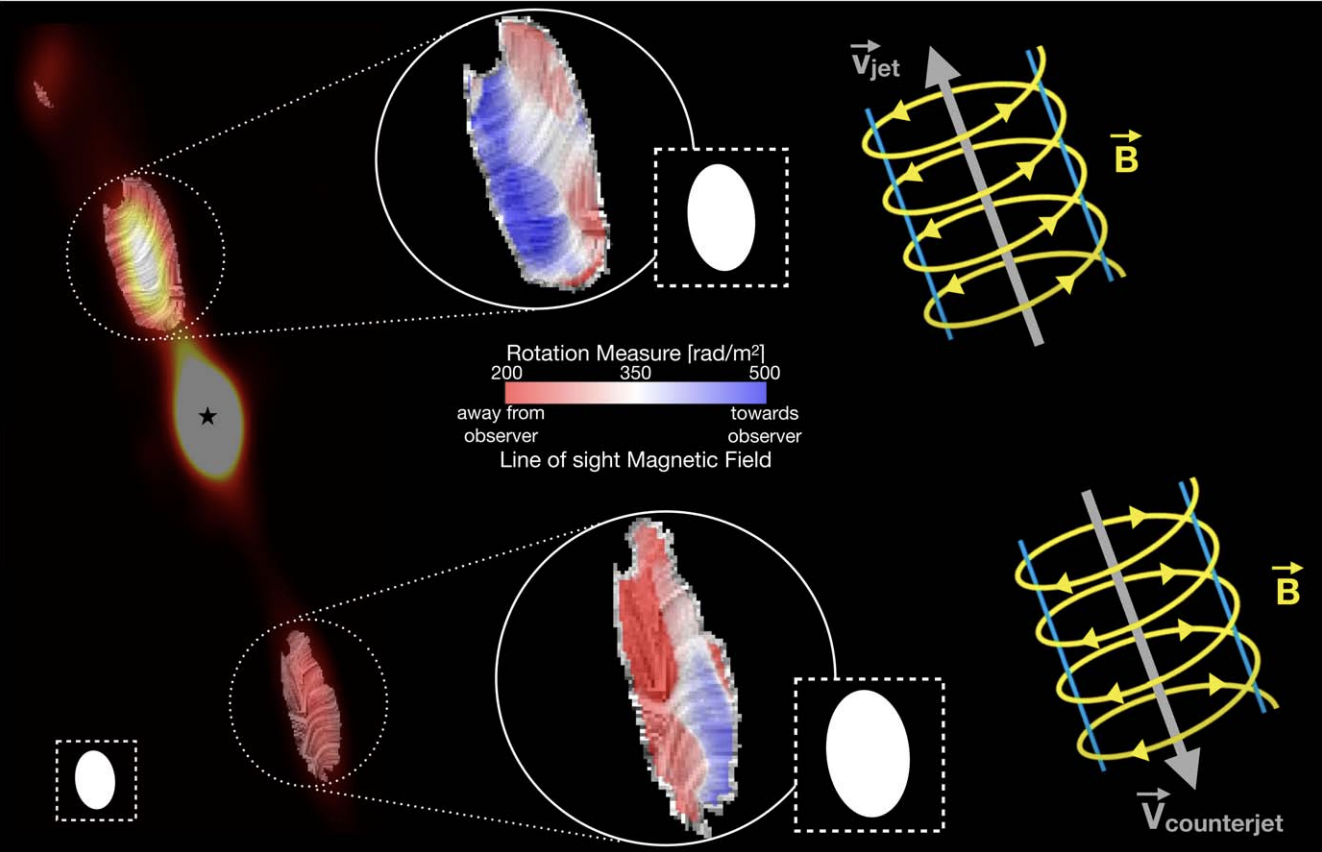
Credit: Rodríguez-Kamenetzky et al. 2025, The Astrophysical Journal.
New observations from the National Science Foundation National Radio Astronomy Observatory’s (NSF NRAO) Karl G. Jansky Very Large Array (NSF VLA) provide compelling evidence supporting a universal mechanism for the collimation of astrophysical jets, regardless of their origin.
The new study, published in The Astrophysical Journal Letters, reveals the presence of a helical magnetic field within the HH 80-81 protostellar jet, a finding that mirrors similar structures observed in jets emanating from supermassive black holes.
Jets, powerful, highly collimated outflows of matter and energy, are observed across a vast range of scales in the universe. From the supermassive black holes at the centers of galaxies to the young stars in our own Milky Way, these jets play a crucial role in the evolution of their host systems. However, the precise mechanism that guides these jets and prevents them from dispersing into space has remained a long-standing puzzle.
“This is the first solid evidence that helical magnetic fields can explain astrophysical jets at different scales, supporting the universality of the collimation mechanism,” said Adriana Rodríguez-Kamenetzky, of Institute of Theoretical and Experimental Astronomy (IATE), Argentinian National Scientific and Technical Research Council and National University of Córdoba (CONICET-UNC) and leader of the work.
Previous research using the NSF VLA, highlighted by NSF NRAO press releases in 2010 and 2021, showed the existence of magnetic fields in some protostellar jets and established the importance of helical magnetic fields in collimating jets from supermassive black holes.
However, until now, definitive evidence confirming the presence of helical magnetic fields in protostellar jets had been elusive. The challenge lies in the fact that the emission from protostellar jets is predominantly thermal, making it difficult to trace the magnetic field structures.
“Back in 2010, we used VLA to detect non-thermal emission and the presence of a magnetic field, but we couldn’t study its 3D structure,” said Carlos Carrasco-González, of the Institute of Radio Astronomy and Astrophysics (IRyA) of the National Autonomous University of Mexico (UNAM).
This new study overcomes these limitations by utilizing the enhanced capabilities of the upgraded NSF VLA. The high sensitivity and broad bandwidth of the NSF VLA allowed astronomers to perform an unprecedentedly detailed Rotation Measure (RM) analysis of the HH 80-81 jet. The RM analysis allows researchers to correct for Faraday rotation—the rotation of the polarization of light as it passes through a magnetized plasma—revealing the true orientation of the magnetic field.
“For the first time, we were able to study the 3D configuration of the magnetic field in a protostellar jet,” said Alice Pasetto, of IRyA-UNAM.
Key results
This study marks the first time RM analysis has been successfully applied to a protostellar jet, providing a unique insight into its three-dimensional magnetic structure.
The analysis definitively reveals a helical magnetic field configuration within the HH 80-81 jet. This result mirrors observations of helical magnetic fields in extragalactic jets, strongly suggesting a common mechanism for jet collimation across vastly different scales.
By analyzing both the approaching jet and the receding counterjet—a feature readily observable in protostellar jets, unlike those originating from supermassive black holes—researchers confirmed that the helical magnetic field is intrinsic to the disk-jet system and not a result of interactions with the surrounding medium.
These findings provide robust support for the hypothesis that helical magnetic fields are a universal mechanism for collimating astrophysical jets, regardless of the scale or origin of the jet. This unifying theory helps unravel the complex physics governing the launch and evolution of these important cosmic structures. https://public.nrao.edu/news/helical-magnetic-fields-a-universal-mechanism-for-jet-collimation/









Recent Comments